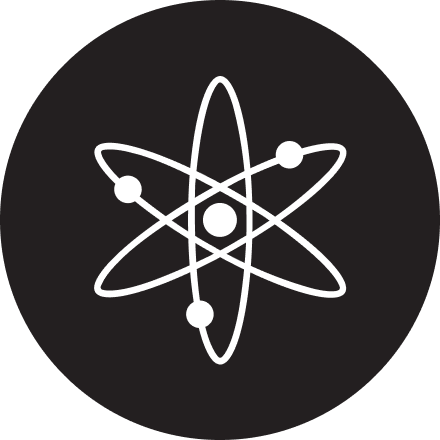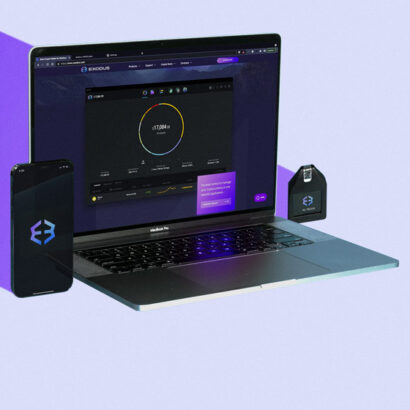Cosmos — the Internet of Blockchains
Cosmos, sometimes referred to as “the Internet of Blockchains”, is a blockchain network architecture composed of many independent blockchains (zones).
Cosmos Hub was the first public blockchain in the Cosmos Network. Cosmos Hub can connect to other blockchains through Inter-Blockchain Communication. It also keeps track of token types and the number of tokens in each connected blockchain.
Each of the blockchains on the Cosmos ecosystem is powered by the BFT consensus algorithm. Cosmos uses the Tendermint protocol which stands out for its fork accountability, simplicity, and performance.
Key Points:
- Cosmos is an ever-expanding network of interconnected blockchains, applications, and services
- Cosmos uses Inter-Blockchain Communication (IBC) protocol to allow interoperability between otherwise incompatible blockchains
- Cosmos was developed in collaboration with Jae Kwon and Ethan Buchman
- Cosmos launched in 2019
- Cosmos has a native token, ATOM, which powers the Cosmos ecosystem
- ATOM can be used for staking, governance, and paying for transactions in Cosmos
- You can buy ATOM on top crypto exchanges and brokerages such as Binance, eToro, Coinbase, and Kraken.
Cosmos was designed mainly to solve the problems existing with current blockchains. Some of the challenges of blockchain technology that Cosmos addresses include:
Scalability
Scalability is an issue with blockchain technology. Cosmos aims to solve this problem by optimizing blockchains to process more transactions per second and handle multiple users at the same time without compromising speed.
Ease of use
Cosmos provides tools that developers need to develop blockchain applications. Using Cosmos can reduce the development time by weeks. This is possible through the Cosmos SDK which creates an ecosystem of modules designed for developers to create blockchain apps without starting from scratch each time.
Sovereignty
Cosmos provides an environment that allows intercommunication and interoperability between blockchain without undermining the sovereignty of an individual blockchain.
History of Cosmos
The introduction of Tendermint to the crypto industry by blockchain developer Jae Kwon marked the first steps in the development of Cosmos. Jae Kwon co-founded Tendermint with Ethan Buchman in 2014 and later co-founded the Cosmos Network. They first created the Tendermint consensus algorithm which powers Cosmos.
The two also collaborated in authoring the Cosmos white paper in 2016 then launched an ICO in April 2017.
In 2018, the network began the release of the Game of Stakes, followed shortly after by the release of the Cosmos software in 2019, effectively marking the launch of the main Cosmos network.
How Cosmos Works
The Cosmos network was designed to enable the scalability and interoperability of blockchains by providing a decentralized network of networks.
Cosmos consists of three layers that are important to its functionality:
- Applications
- Networking
- Consensus
The applications layer consists of blockchain applications that process transactions and update the state of the network.
The networking layer facilitates communication between the Cosmos Hub and other blockchains (zones) in the network.
Cosmos uses a proof-of-stake consensus mechanism to authenticate transactions. The applications, networking, and consensus mechanism of the Cosmos Network must be interconnected for optimal functioning throughout.
For this interconnectedness, the Cosmos network relies on tools such as:
- The Inter-blockchain Communication (IBC) protocol
- Tendermint Byzantine Fault Tolerance (BFT) engine
- Cosmos Software Development Kit (SDK)
The inter-blockchain communication (IBC) protocol connects each zone or independent blockchain to the Cosmos network. Each of the zones connected to the Cosmos Network independently validates user accounts, mint new tokens, reward users, and validates its transactions. These zones are autonomous and need no intervention to operate.
Each of the zones within the network oversees various validators, transactions, token creation, and token distribution. The IBC protocol serves as the communication pathway for all these zones, supporting fast and secure communication and interoperability among all the zones connecting to the Cosmos Hub.
Tendermint Byzantine Fault Tolerance (BFT) engine is an algorithm that allows blockchain developers to add new zones to the network without coding from scratch. The protocol also ensures continued security in the network.
Cosmos also uses the proof-of-stake consensus mechanism that governs the massive network of validators. The validators on the network must have ATOM, the native token of the Cosmos blockchain, for them to serve as validator nodes on the network.
And the Cosmos Software Development Kit (SDK) provides developers with essential tools such as the Tendermint Core, and Tendermint BTF Engine. These are necessary for coders to make changes, additions, or customize new blockchains that connect to the Cosmos network.
Solving Blockchain Scalability
Cosmos was designed to solve the scalability problem associated with the existing proof-of-work algorithms. The tools we mentioned earlier such as Tendermint, SDK, and IBC are the core components that make it possible for Cosmos to provide fast transaction speed and reduce the time to development of a blockchain network.
Cosmos solves the scalability issue of blockchains through vertical and horizontal scalability solutions. Vertical scalability solutions allow a blockchain to optimize its transactions while horizontal scalability solutions allow blockchains to reach more users.
In vertical scaling, Tendermint BTF allows the blockchain to support thousands of transactions per second.
Horizontal scalability occurs when a blockchain can have multiple parallel chains running on the same application and with a common set of validators. This theoretically makes a blockchain application infinitely scalable.
Cosmos Improves Interoperability
Another problem Cosmos seeks to solve is the interoperability of blockchains. For a long time, blockchain networks have strived to become the next bitcoin, which creates an environment based on competition.
These blockchains end up operating separately thus limiting the ability to transfer tokens between blockchains.
The development of Cosmos took a different approach by focusing on interoperability between various blockchain. Cosmos achieves this interoperability using the Inter-Blockchain Communication protocol, thus facilitating communication between blockchains.
One thing that sets Cosmos apart is the ability to link both Tendermint-based and non-Tendermint-based chains.
Cosmos connects Tendermint-based chains using two classes of blockchains. These are hubs and zones. Zones refer to regular heterogeneous blockchains while hubs are blockchains designed to connect zones.
When a zone connects to a hub, it also automatically connects to other zones that are connected to a hub. By connecting to other zones through hubs, the need for an infinite number of connections is eliminated. This helps to keep the number of connections within the network from getting out of hand.
Cosmos also supports interoperability of non-Tendermint-based blockchains, including proof-of-work and proof-of-stake blockchains. For proof-of-stake blockchains, all they need to connect to Cosmos Network is to adapt IBC.
For proof-of-work blockchains, they need to use a proxy chain (peg zone). The peg-zone is compatible with IBC, which then allows interoperability between proof-of-work blockchains and the Cosmos network.
What is ATOM?
To understand ATOM, we first need to understand its underlying blockchain and technology.
Public blockchains rely on either proof-of-work or proof-of-stake protocols for governance and validation of transactions.
Cosmos Hub, the first blockchain on the Cosmos network, uses proof-of-stake and issues ATOM as the native token.
ATOM has several use cases:
- It’s a spam-prevention mechanism on the Cosmos ecosystem.
ATOM serves as the payment for transaction fees, in direct proportion to the amount of energy consumed during a transaction. This fee prevents wasteful use of the network. - As a staking token to validate transactions.
Stakers earn rewards from staking their coins as their staking power contributes to the security of the network. ATOM tokens are also used as collateral when you stake them. Therefore, if you try to attack the network, you lose the tokens you staked. - ATOM is used as a voting mechanism in the governance of the Cosmos Hub.
ATOM holders can vote on proposals using their staked ATOM.
The ATOM token was first sold publicly in 2017 raising about $16 million in revenue. As of 2022, ATOM has a total supply of over 250 million and a total circulating supply of just over 200 million.
What are the Benefits of ATOM?
The Cosmos network is a unique application of blockchain technology that opens up opportunities that come with facilitating communication between various blockchains. You can be a part of the Cosmos ecosystem in various ways, including owning ATOM tokens and reaping the associated benefits.
Some of the benefits of the ATOM include:
Earn Rewards by Staking
Cosmos is based on a proof-of-stake consensus mechanism, which means holders of the token can earn rewards by staking their ATOM.
You can stake ATOM using several platforms such as:
- Exodus Wallet
- Atomic Wallet
- Binance
- Kraken
- Ledger Wallet
- Trust Wallet Coinbase
- Cosmos exchange
Participate in Governance
Cosmos uses what is known as on-chain governance meaning community members can formally or informally participate in upgrading and improving the ecosystem. Anyone can participate in the governance of the platform to decide on issues such as
- The distribution of rewards
- The inflation rate of the Cosmos network
- The application of slashing parameters
- The levels of quorum required
- The length of the unbonding period
Stakeholders can participate in governance by submitting a proposal on the Cosmos network. Submitting a proposal carries a transaction fee of 0.000001 ATOM. The proposal required a minimum of 512 ATOM for voting to proceed. Usually, the proposal has to gain the minimum number deposit of 512 ATOM within two weeks for voting to proceed.
Voting is open to those who have staked their tokens – more tokens equal more influence in the vote. After two weeks, the voting stage ends.
The next stage involves tallying to determine whether the proposal meets the set conditions which include:
- Quorum – more than 40% of the total staked tokens must have voted
- Threshold- more than 50% or a majority of the votes (Except “ABSTAIN”) voted “YES”
- Veto – less than 33.4% of the votes (except “ABSTAIN”) voted “NO”
If the proposal passes, it is integrated into the new version of the Cosmos Network. If it does not pass, the 512 ATOM deposited is sent to the community pool.
-
Diversify Your Investment Strategy
Relying on one coin as part of an investment strategy can quickly backfire on you. ATOM is a great way to diversify your crypto investment strategy.
Cosmos is a unique blockchain with use cases that could extend into the future of blockchain technology. By facilitating communication between previously incompatible blockchains, it allows for the development of new standards in the blockchain ecosystem.
So far, there are more than 20 blockchains (December 2021) and over 262 apps and services on the platform, showing you just how much people believe in and are adopting Cosmos.
Where to Buy ATOM
ATOM has grown in popularity to become one of the top 100 cryptocurrencies. With a market capitalization of $9,397,188,568.12, ATOM has a market rank at #20.
Due to its growing popularity, ATOM is available across major cryptocurrency exchanges.
Here are some of the exchanges that support buying and selling of ATOM:
Binance
Binance is one of the world’s largest and most popular cryptocurrency exchanges. Binance allows you to purchase Cosmos (ATOM) at a relatively lower price compared to other competing exchanges. You pay a commission of 0.10% for Cosmos. Binance also has higher liquidity allowing you to sell or buy ATOM based on market movements.
Coinbase
Coinbase is another popular cryptocurrency exchange where you can buy ATOM. It is a quick and convenient way to buy ATOM, as the setup process takes a short time. Once you have an account, you can use your debit card to purchase ATOM instantly.
Coinbase is considerably expensive, as it charges a 3.99% transaction fee when using a debit card. However, if you are more worried about finding a reliable and easy-to-use platform, Coinbase is a great place to buy ATOM. Coinbase stores 98% of client digital assets in cold storage, which adds a layer of security.
Kraken
Kraken is a high-ranking broker and exchange. The platform is easy to use for beginners and offers educational resources to help you. Kraken is also secure, allowing you to buy or sell ATOM in a secure environment.
eToro
eToro is a top-ranking brokerage site. It is regulated by several regulatory authorities including the SEC, making it a reliable place to safely buy Cosmos (ATOM). eToro adopts a spread-only pricing model starting at 0.75%. eToro supports fractional buying of ATOM, so you can invest with what you have from as low as $10.
You can add funds directly from your debit card or credit card, wire transfer, or e-wallet. Another advantage of buying on eToro is that you can buy or sell your ATOM tokens through their mobile app which is available on both Android and iOS.
How to Buy ATOM
Once you have the crypto exchange or brokerage set up, the next step is buying and storing ATOM.
These are the steps:
Step 1
Sign up for an Account on a Cryptocurrency Exchange
Register for an account with your chosen cryptocurrency exchange or brokerage. Use a valid email address and a strong password to protect your account. Activate two-factor authentication if it is supported on the platform.
Step 2
Verify and Fund Your Account
If you are buying ATOM using your credit card or debit card, you must provide additional details and supporting documents to verify your identity. It is also possible to buy ATOM with major cryptocurrencies such as BTC and ETH. Before you can buy ATOM, you must fund your account with either another cryptocurrency or cash.
Step 3
Buy ATOM
Once you have funded your account, select the amount you wish to spend on ATOM and purchase. You can now choose to trade, hold, or stake your ATOM tokens based on whether the exchange you choose supports staking.
Step 4
Store your ATOM Securely (and Earn up to 15% APY)
While popular exchanges provide a safe way to store your ATOM tokens, it is always our recommendation to store your tokens in a private wallet.
Some of the best wallets for storing ATOM include:
- Ledger cold storage wallet (Ledger Nano X Ledger Nano S)
- Exodus Wallet
- Atomic Wallet
- Trust Wallet
Cosmos FAQ
What is Cosmos?
Cosmos is a network of decentralized and interconnected blockchains that can communicate with each other.
What problems Does Cosmos Solve?
Cosmos primarily focuses on three problems in blockchain technology: scalability, sustainability, and sovereignty.
What Projects are on Cosmos?
There are hundreds of projects on Cosmos. The most popular include Binance Chain (BNB), Terra (LUNA), Cosmos Hub (ATOM), and Crypto.com Coin (CRO)
What is ATOM?
ATOM is the native token of the Cosmos Hub. But it is not the only token you can buy or exchange on the Cosmos network.
Does Cosmos compete with Ethereum?
No.
Cosmos does not compete with Ethereum.
Instead, it provides a bridge between Cosmos Hub and Ethereum which increases the interoperability of the blockchains.




